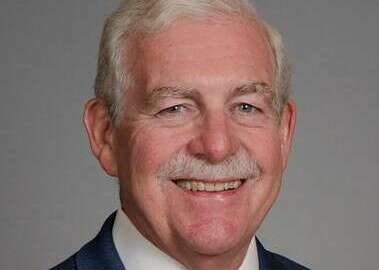
Montana CIO gets ready to retire state’s mainframe infrastructure: Part 2
Montana CIO Tim Bottenfield took the job in 2019 and has orchestrated successful remote working environment for state employees during the pandemic. Montana wil...
This is the continuation of an interview which aired July 9.
Organizationally, like most states, Montana’s State Information Technology Services Division (SITSD) is situated in the state’s department of administration — the most common chief information officer governance model in the country.
In fact, that’s the one that I had when I was CIO in Massachusetts. My boss then was the director of the department of administration and finance, Charlie Baker, who’s now governor of Massachusetts.
That model is evolving, however, as National Association of State CIO’s executive director Doug Robinson has explained, with a dozen or more states having CIOs with their own cabinet agency. Each election seems to augur additional CIO elevations and many feel the enhanced role and accomplishments of state CIOs during the coronavirus will expedite this trend.
Appointed to governor’s cabinet
Interestingly, I learned that in Montana both CIO Tim Bottenfield and his boss, department of administration director, John Lewis, are listed as members of Gov. Steve Bullock’s cabinet.
“I do answer directly to department director Lewis, but I’m also appointed by the governor, which means I serve on the cabinet, and thus have a dual reporting role, with Lewis and with the governor’s chief of staff, Ali Bovingdon,” Bottenfield said. SITSD has about 180 FTE’s and he describes it as the central IT group within the state. “We’re fully consolidated on the infrastructure side. But we’re still distributed as a state when it comes to personnel.”
All of the various agencies still have IT staff, so it’s a hybrid model from a centralization standpoint.
As we have often said, a state CIO’s success depends on having control and authority over the IT budget, operations and policy. Bottenfield agreed.
“Yes, that’s absolutely true. I think that position is well suited for the state of Montana, organizationally. And functionally, there is a considerable amount of authority in terms of project oversight and spending authority,” he said. “All IT purchases have to go through my office, statewide.”
SITSD does have some statutory authority that was granted through the Montana Information Technology Act (MITA).
“That’s been great to be able to have that in place. But you know, just having something like that — that doesn’t solve all your problems,” Bottenfield acknowledged. “You really have to be out there and partner with the agencies to function. And I think that’s always the challenge.”
Retiring mainframe infrastructure this fiscal year
Montana has garnered national recognition for its decision several years ago to plan to retire its mainframe infrastructure
“For at least one CIO before me and maybe two, I think the writing was on the wall that it was not going to be sustainable for us to maintain our mainframe services,” Bottenfield said. Being a small state resource-wise, many agencies were beginning to divest themselves of the requirements to keep their mainframe services. “So, as that started to come to fruition, maybe going back 10 years ago, each year there’d be somebody that’s dropping off the mainframe and moving their services to some other platform.”
It became apparent that it was not going to be cost effective. There was a concerted effort put in place by Bottenfield’s predecessor, Ron Baldwin.
“I’ve been kind of carrying the football here for two years on that project. And we’re on target to have the two remaining agencies have their systems off in one year; it’ll be at the end of this next fiscal year in June 2021,” Bottenfield said.
Like most successful state CIOs, he credits his success to his ability to build bridges with his agency customers. He had a half dozen years or so to refine that approach and relationship building when he worked at the Montana Department of Revenue (DOR) prior to his appointment as state CIO.
“That time at DOR certainly enabled me to hone those skills at a smaller scale within a department, but I was also pretty keen to observe the landscape within the larger state government here in Montana.”
Bottenfield had a plan from day one as state CIO to really engage the agencies. He admits he probably wore out several pairs of shoes the first year as he visited each agency every month.
“I had 30-plus meetings a month where I was going to the agency’s turf, and we were talking IT and business initiatives,” he said. During that first year he was meeting primarily with IT staff, the CIO or director of IT operations in an agency or organization. “So it’s super beneficial. But it really helped me gather that information and really get it to my folks and share those ideas with them within my own organization, and kind of get them on board and have them understand what’s going on from the agency’s perspective.”
The second year Bottenfield changed the process around.
“I changed up because I couldn’t afford buying shoes anymore. And I actually invited the agencies to come over to my office. And we did it on a quarterly basis, but this time, I invited not only the IT staff, but I also invited the program director and deputy directors,” he said.
He wanted the business owners to be there to get the flavor from a business perspective, not just from the IT perspective.
“And that was a next level of engagement that has really been beneficial,” he said.
Besides Bottenfield, these meetings included his executive staff as well: His chief financial officer, chief information security officer, chief technology officer, plus communications and an executive support person as well.
“So that really is what we’ve done,” he said. “And that’s enabled us to really get that sense of what’s going on in the agencies and how we can best help them.”
Copyright © 2024 Federal News Network. All rights reserved. This website is not intended for users located within the European Economic Area.






